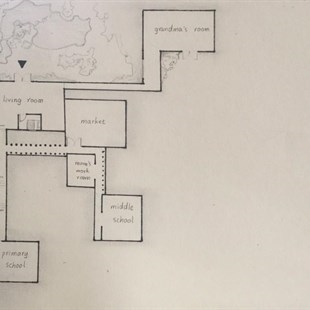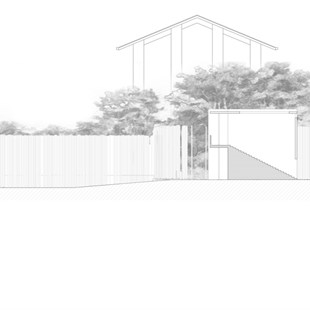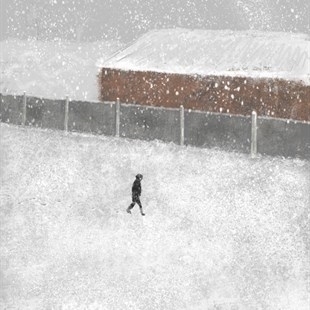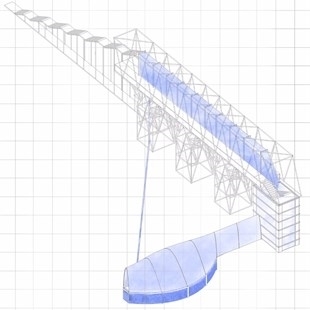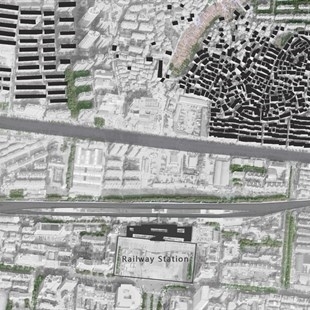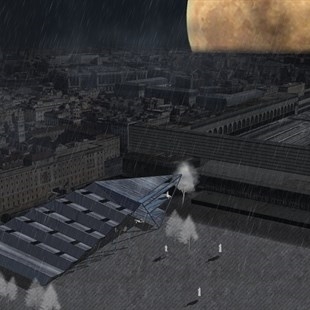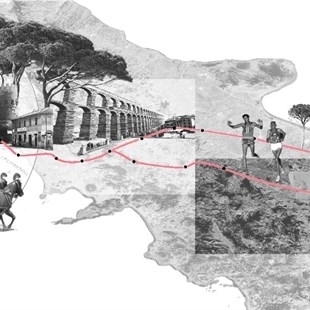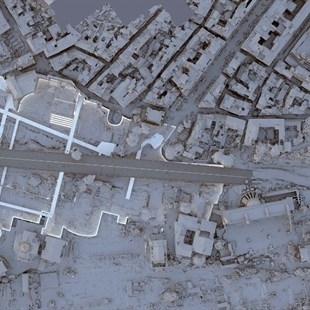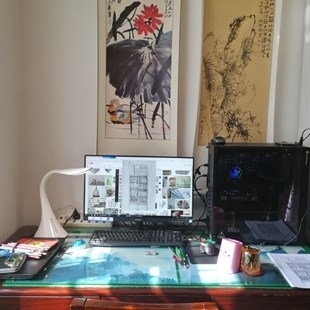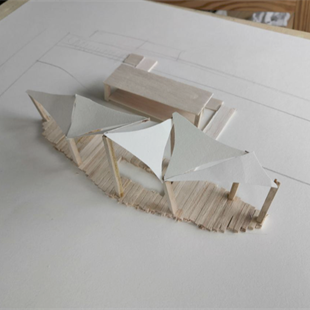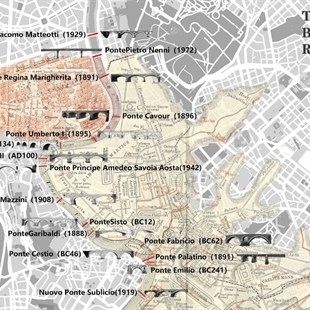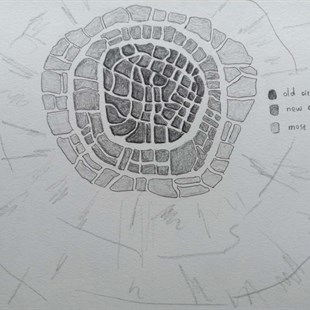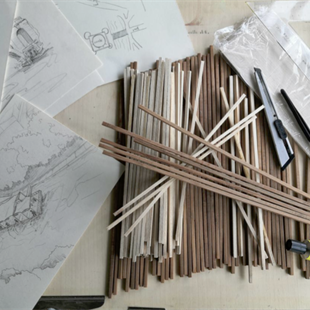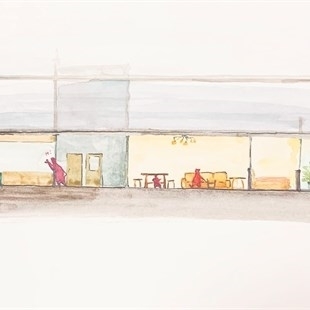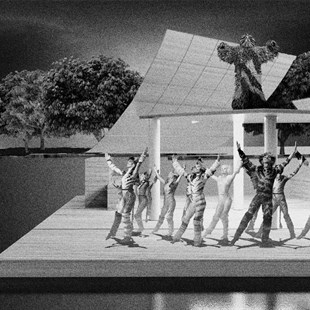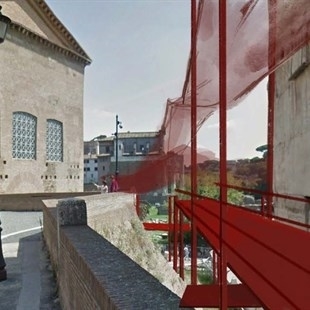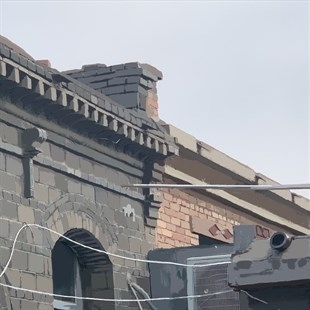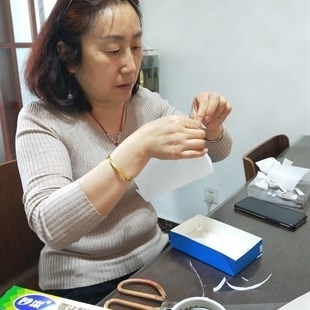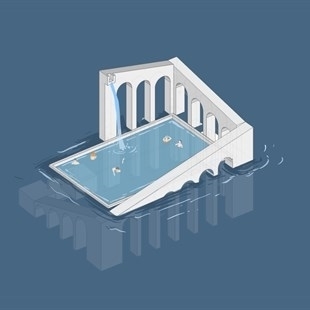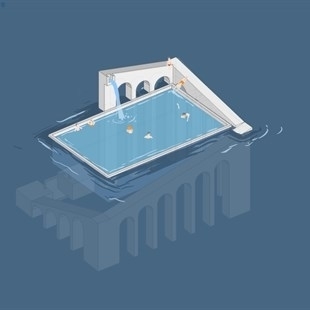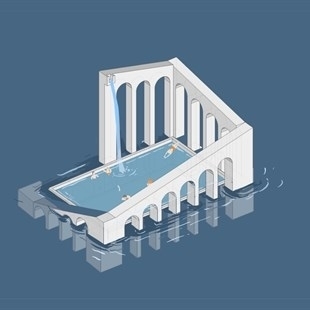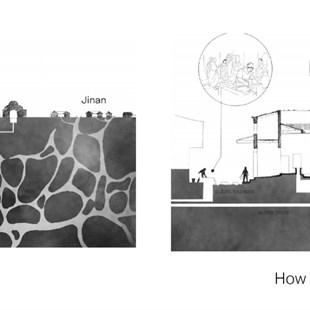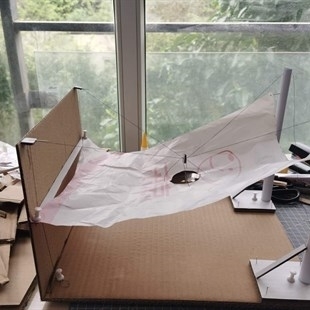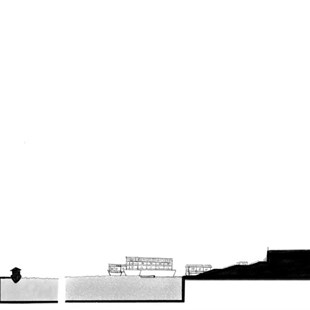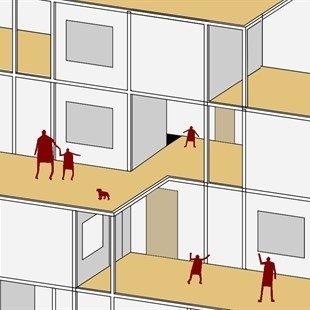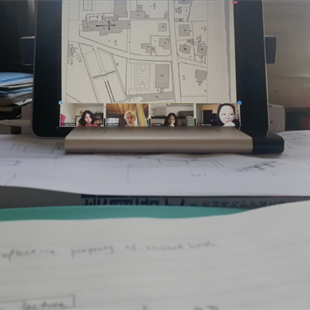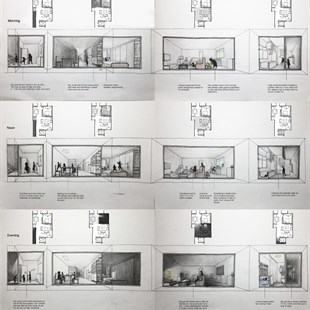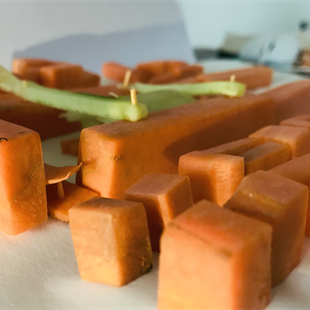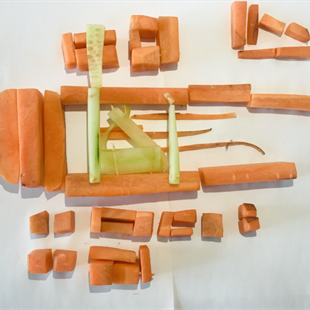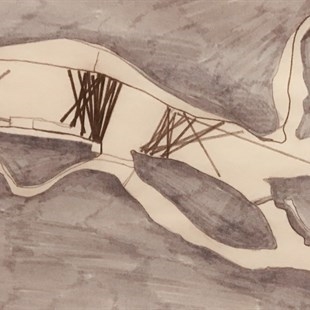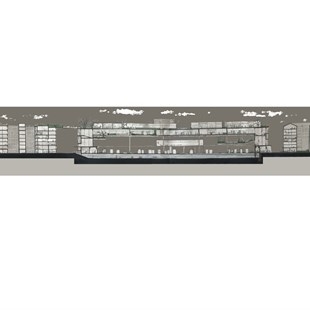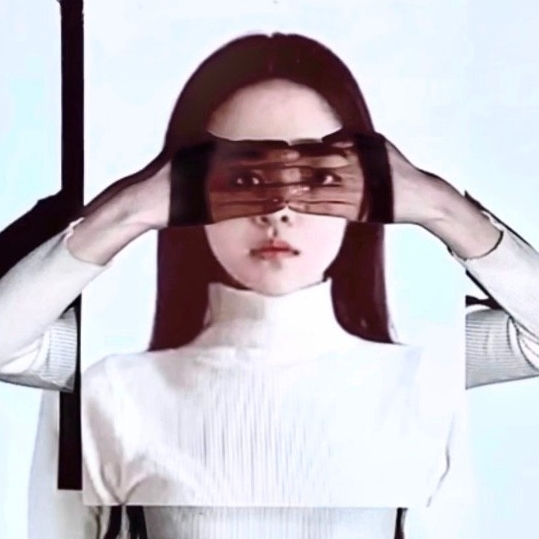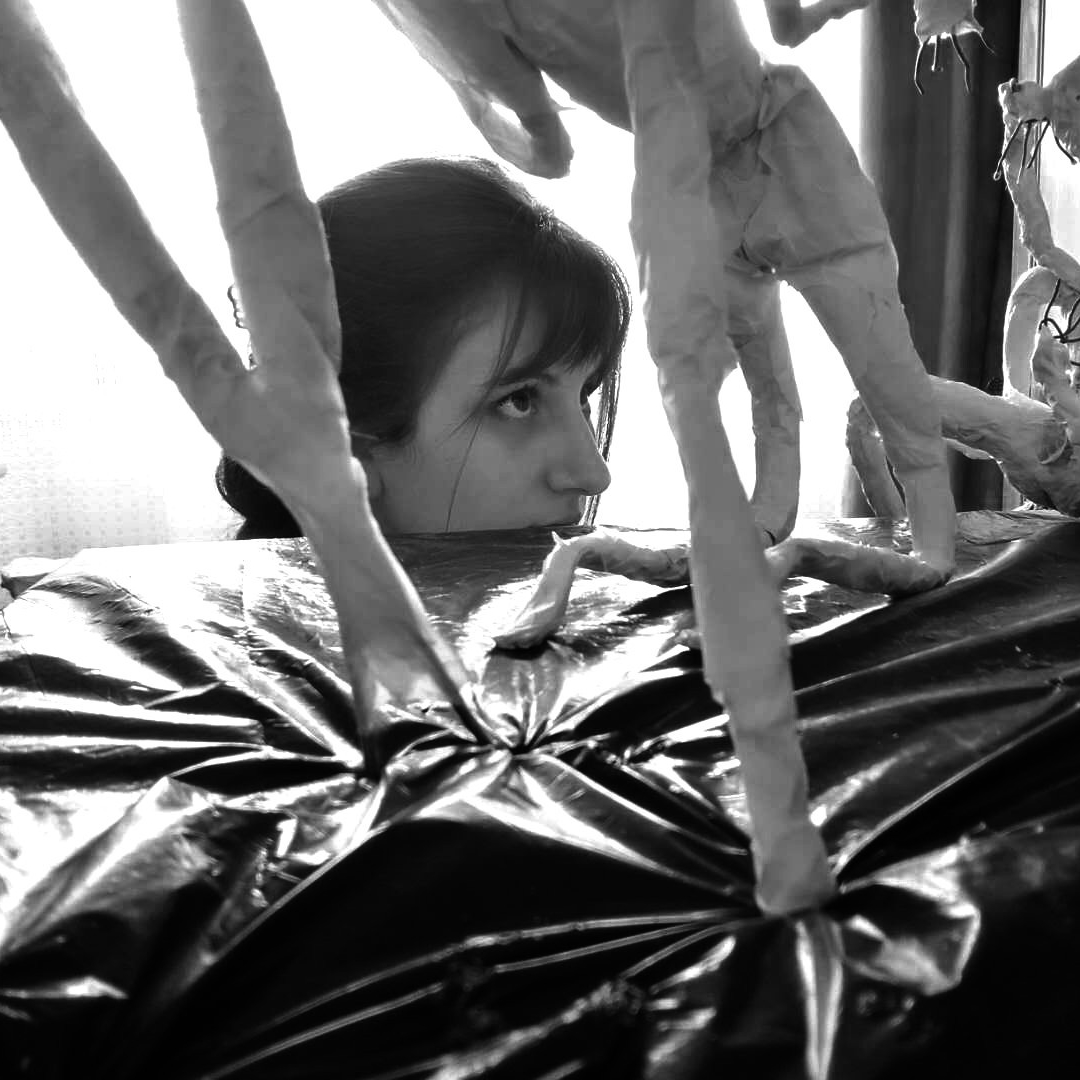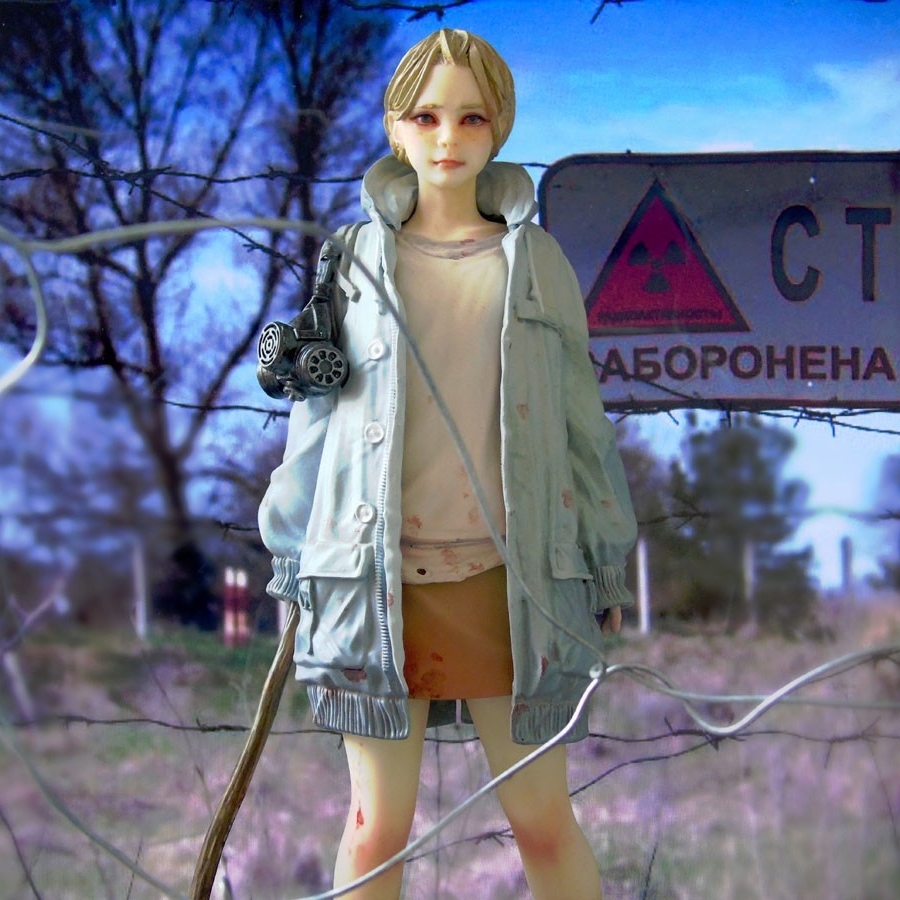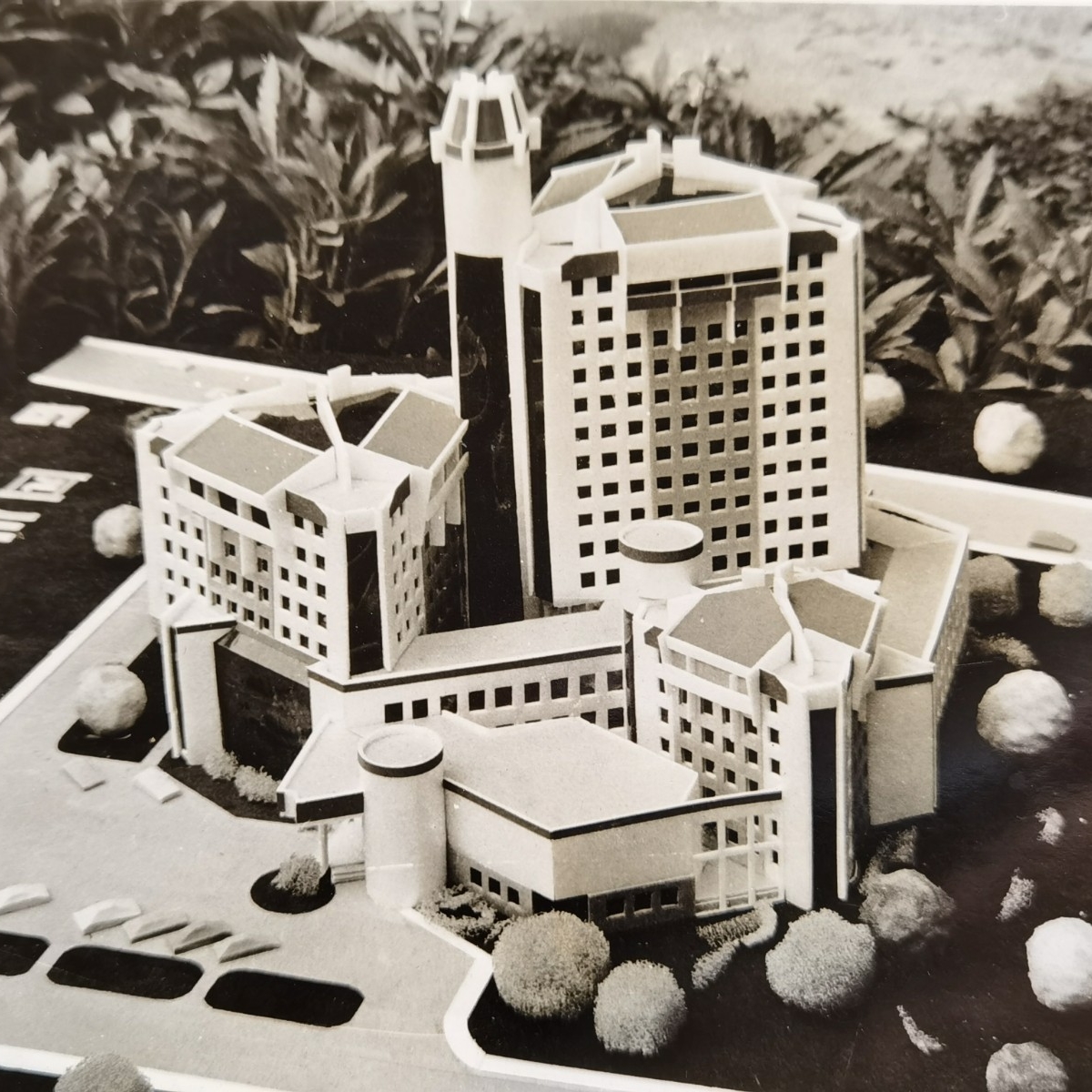
Editor’s note: The “national online teachings” conducted by many colleges and universities have already heated up after developments over three months, while the “experimental” significance of open teaching has also been gradually highlighted. The Experimental Class of the School of Architecture, CAFA was organized by Professor Zhu Pei, Dean of the School of Architecture, CAFA. Professor Peter Andrew Tagiuri from the Rhode Island School of Design, U.S.A. was invited to teach the senior undergraduates, Zhang Qian and Liu Yanchen jointly instructed the class. “Making models” is a daily necessity for students who major in architecture but due to “online classes at home,” their “struggles” with models have become fresh and lively which has attracted onlookers:

Wang Yiru who majors in Architecture and his family “supporters” made models together
“Parents make models together…"
“Mama Wang takes making a model seriously, it's really awesome!”
"My parents finally knew all about my daily life at school..."

Zheng Siyu, a student from the School of Architecture, built a model with carrot roots at home
“If there are no materials for models, then find them!”
“I was very moved when I saw our classmates used courier boxes, packaging bags, potatoes or carrots to make (architectural) models…”

Classmates took pictures online while commenting on each other’s drafts in a group discussion.
“In order to comment on the picture, we put on beautiful makeup, if there’s no one that can take pictures for us, then we took screenshots of each other…”
Indeed, “through the internet, teaching can break through the spatial boundaries of various units,” as Dean Zhu said, “since it is no longer possible for students to focus and finely sculpt on large-scale solid models, conceptual models with simple, plain and abstract features can instead be used to explore the significance of the content behind the forms.” Online teaching seems to change the way that teachers communicate with students, but it undoubtedly provides a new “world.” The subject of the Experimental Class of the School of Architecture started from “House and Home,” the most suitable scene from our daily life and started with the online tour to Rome. Let’s look at this wonderful and interesting trip!
A Brief Introduction to the Online Course
The most impressed city can be read like carbon paper. A city can also be read by its inhabitants and written by the lives that coexist in it: full of layers, monuments and textures, streets and blocks, hills and valleys, houses and markets, concrete and wood, wet, paved with growth, the destroyed, the present and past of all these, as well as the present display of the future. Habit, behavior and habitat, these words combine behavioral patterns, body posture or social structure, natural environment, an improved environment with house and home.
In our own homes, there are some experiences we don’t need to remember, we just need to merge them: wake up, rise from the bed, dress, 20,000 times of breakfasts, lunches and dinners, lock or open the door thousands of times, enter the front door, climb the stairs, sit at the table, look out the window and check the weather. We group these almost organic behaviors as ambiguous memories. We live among things and places: there are shoes, clothes, bottles, bread and streets. These ordinary things and vague memories make up our homes.
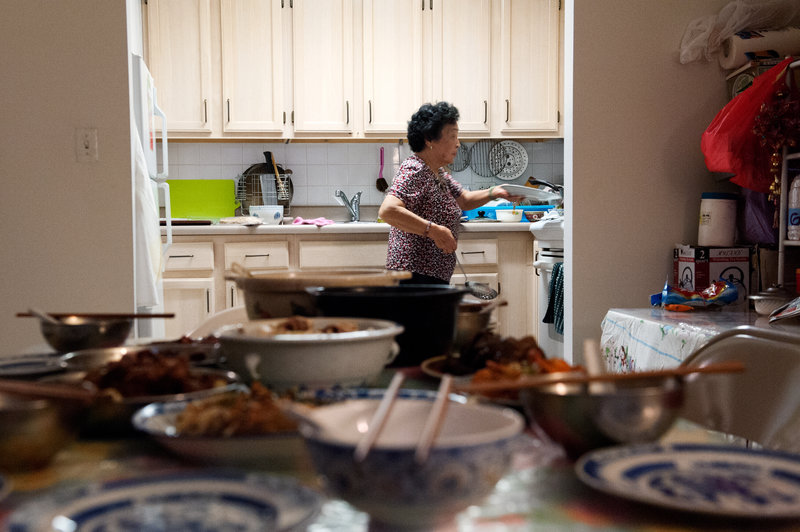



Pictures from the Coursework
What constituted our memories, where did our memories come from, where are they stored, what retains them and what wakes them up in our bodies? Physical perceptions: vision, sound, touch, smell, taste, movement, posture, reflection, etc. have played what kind of role in creating and recreating memories? And what roles do images, languages, habits, culture and civilization play? How are time, history and memory intertwined with each other? What exactly is it that places memory in a proper place and puts it on the memorial, text, image and object? Where do we build our homes: in consciousness, in body, in things or in places?
The course explores the internal memories of the city through the students’ complete perception of the city’s history, context and status quo, and thus extends the deep understanding of the city we live in. Teaching methods include observation of phenomena, field visits, urban cartography, training of the hand-eye perception of painting, etc.
The course is titled as “Ordinary Things/Ordinary Places (Constructing Homes)”, which explores the texture of the city, monuments and daily affairs and how the memory of the community of residents is built on the venue. The course was planned to lead students to Rome, Italy, and conduct a 37-day study and investigation in Rome. Through multi-level excavation of a city with a thousand-year history, the understanding of commemorative and daily life, the construction of places and fields. The course was supposed to select a venue in Rome and span the dimension of time to design a common house that can bear deep memories.
The visit to Rome was originally scheduled and included surrounding cities from February 22 through to March 29 to study and explore, visit the Rome campus of Rhode Island School of Design.
Professor Peter Andrew Tagiuri, Zhang Qian, and Liu Yanchen are supposed to lead the students in the fourth-grade Experimental Class to the Roman campus of the Rhode Island School of Design in Rome, Italy, for a 37-day study and exchange activity. During this period, students were required to complete five weeks of courses and topic assignments, exchanges, reports and evaluations in Rome. The course content includes the investigation of churches, important buildings and urban investigation in different periods of Rome; the investigation of important landscapes and residences in Rome and surrounding cities and assignments of drawings, perspective sketches and watercolors. On the basis of the studies on the existing important architectures in Rome, the historical context of ancient Western architecture will be taught and the methods of creating fields of space across the ages will be understood. The course aims to enable students to receive architectural education more diversely and internationally, cultivate students’ multi-dimensional design perspectives and concepts, and understand the historical development process of different cultural venues.
From March 30 through April 17 it was originally scheduled to return to the campus of CAFA, complete the design and drawings, report and evaluate on the drafts.
Online Teaching Notes
Edited According to the Interviews with Four Instructors

Zhu Pei, Dean and Professor for School of Architecture, CAFA
1. Think independently and read extensively
Although the pandemic has hindered direct contact between teachers and students on the “physical level,” it has created a more independent environment and space for thinking for individuals. Through the guidance of instructors, students can have more freedom to read extensively and learn to increase their knowledge, to cultivate students’ self-awareness and independence. If looking at it from another perspective, we can naturally let them develop, emphasizing the cultivation of students’ good habits in independent thinking and extensive reading.
2. Artistic thinking that emphasizes concepts and ideas rather than forms
As the pandemic restricts the environment, students must learn to pay more attention to conceptual thinking and expression during the creative process and they have to learn to express their thinking and ideas with the plainest and simplest materials around them. The limitations of materials and tools instead can inspire students’ creations, train students to observe the daily life they usually neglected from their own unique perspective and use the simplest and most common materials in daily life, or even daily waste to express the concepts behind forms.
Our students’ innate sensitivity and control over forms are our advantages, but these natural advantages make it easy for us to ignore the content behind the forms and put emphasis on forms rather than concepts. During the process of online teaching, it is impossible for students to elaborately focus on the large-scale solid model, instead they use simple, plain and abstract conceptual models to explore the meaning of the content behind the forms.
I just participated in the final evaluation of the senior class of the School of Architecture. Well-known Professor Peter Andrew Tagiuri from the Rhode Island School of Design and two exceptionally excellent young teachers Liu Yanchen and Zhang Qian from our school jointly instructed the teaching. The subject of the Experimental Class was very intriguing today when the global pandemic spreads. “Based on everyday things, intervening in architecture and urban life,” its purpose is to train students to return to their origins, touch on the essence of architecture and use their perspectives and experiences in daily life to construct the significance behind architectural forms. Students use the simplest and commonest materials to build models, their concepts seemed to be easy, but they are also quite inspiring and creative.
3. Perceiving the nature of architectural art, while getting close to the essence of architectural art
Architecture is not only a category of visual art, but it is also the art of time and space. In my opinion, architectural art is very close to music and movies to some extent, as it uses time to shape the experience of space. Internet and video technology played an important role during the pandemic. We can take advantage of the integration of knowledge on the internet and use the combination of video and physical conceptual models to cultivate students’ ability to perceive the artistic characteristic of architectural experience, time, and flowing features.
4. Break through the boundary
The advantage of online teaching during the pandemic is that students can participate in sharing and learning in different fields in a freer and more convenient way. Through the internet, teaching can break through the spatial boundaries of teaching units, make the courses of the School of Architecture cross-check with other departments and also allow more excellent classrooms to open up to society.
5. The same starting line
For all architectural schools around the world, the global pandemic has to some extent subverted our traditional perception of architectural teaching. When confronted with the unexpected new things in online teachings, we have to stand on the same starting line again. How to adapt to the characteristics of the network and explore the new thinking of experimental architectural art teaching is really the main mission we will face.

Peter Tagiuri is a practicing architect and professor. As an architect he collaborates with AOI in London; Kilo in Paris and Casablanca; Wangshu, Jeremiah Watson and Haoru Chen in Hangzhou; Rutz Architects in Zurich; and Gauche Concepts in Tokyo. He has building and urban projects in China, England, France, Japan, North Africa and the US. He has taught at RISD since 1987 (and was department head from 2002–06) and is visiting professor at the CAA in Hangzhou, guest chair professor at Ren Min University, Beijing and external examiner at Edinburgh University and CUHK. He has been a guest professor at the architecture schools in Frankfurt, Stuttgart and the ETH, Zurich and has been visiting lecturer in Beijing, Hong Kong, Lima, London, Osaka, Paris and Seoul. He has degrees from Dartmouth and Harvard, and he attended the Belle Arte in Rome and Carrara.
Working from Memory and In Memoriam (ours and others)
As a teacher I help students to see how they see and how to use their particular world view to bring insight to architecture. We (students and teachers) do this by looking at each other’s work (crits), at precedent and closely at the world around us (ordinary things contain the deepest memories). Nurtured in the womb (womb, room, tomb) we are born into world that we must make ourselves a home in. This is fundamental to all beings and can become the subliminal memory on which we build a profound understanding of architecture.
COVID-19: Because of the necessity to isolate we worked virtually from different locations (Beijing, Jinan, Richelieu,….) but beginning really at the same place, our earliest memories (grandparents’ home, our hometowns) and travelling in our minds to our main place of study Roma; physically remote but familiar to all. We looked to our past and to Roma first as individuals and then as architectural designers.


There is much to learn from Roma even without being able to venture there. By remote reconnaissance has been the way most people have come to know Rome over the past two millennia. And so too, we have discovered her from myths, the long, long history of words and images, and the many recorded strata of artifacts. Online we find books, and movies, city maps and plans, geography, topography. Eternal Rome is every changing and so our projects are and must be ‘temporary’.



During the virtual studio we have happily come to know each other despite our myriad differences, (culture, language, age and gender) with respect, affection and without fear
of criticism. A lot has been discovered and great work produced, 谢谢亲爱的学生!
BUT, though I have learned a great deal from you, unique and talented CAFA students and gifted, generous young teachers, (Zhang and Liu); I miss that we have not spent time silently walking together in Rome, we have not shared meals, nor experience the sense of place, the fragrance of coming Spring, the Romans’ chatter in the Piazza, the cool of the fountains and shady streets, nor have we awakened early for a walk around the Aurelian Wall… “Insomma, non vediamo l'ora di visitare Roma insieme in un futuro più felice e non lontano. Grazie”.
Peter Tagiuri
My thanks to CAFA Architecture and the generous invite from Dean Zhu Pei, Xie Xie Nimen!
Richelieu, France
12 April 2020

Conclusion of Online Teaching Classes
Liu Yanchen/Zhang Qian

Liu Yanchen has taught at the School of Architecture, Central Academy of Fine Arts since 2017. She graduated from the School of Design, the University of Hong Kong and Harvard University.

Zhang Qian has taught at the School of Architecture, Central Academy of Fine Arts since 2018. She graduated from School of Design, Cornell University and Harvard University.
“The sudden outbreak disrupted all of our teaching plans.
In two different countries,
10 different cities,
We started an ‘online tour’ in different venues.”
From the end of the last semester, we began to prepare for the course for the Experimental Class of in the spring semester. We originally planned to meet Professor Taguiri and 10 students in Rome from late February and conduct a five-week field research on the Roman campus of the Rhode Island School of Design. But the sudden outbreak of the pandemic disrupted all our plans. Originally we considered rescheduling the trip to Rome in April, but the spread of the pandemic in Italy and across the world was also unexpected. For this reason, in two different countries and 10 different cities, we started an “online tour” in different venues.
The design course for the senior undergraduates of the Experimental Class this semester was very different from the design course that students have been exposed to in the past. The course explores the relationship between people and space in a very delicate and subtle way, which requires them to experience sunshine, humidity, temperature, taste and sound in a realistic venue, it is necessary to mobilize our senses to a dialogue with the environment in all directions, which makes online teaching more difficult. But at the same time, the long-term life at home offers each of us an unprecedented depth of understanding of our living space. In a way, it is easy for us to be taken into the first part of the design class.

The Online Teaching Process Conducted by Zhang Qian at Home
“Among the most daily behaviors, places and people, we become us.”
Professor Taguiri did not introduce a venue at the beginning of the design class, but he proposed a spatial function type as the beginning of the design, which enabled the students to return to the depths of their inner memories to dig out everyone’s original experience of space before they received any professional training. The theme of “Grandma’s House” is to allow students to return to a distant life scene that they once were familiar with. The pictures that can be left deep in our memories may affect our instinct as an architect without our knowledge. “My family has no characteristics and we live in a very ordinary community.” This is the first reaction of many students. Indeed, although everyone is from a different city in China, few of the students have the luck of having a grandmother’s garden like Zumthor. But the final result is beyond everyone’s expectations. The details depicted by the students are full of surprises: the grandfather who called the neighbors to play chess by knocking on the water pipe, the closet game with younger brother, the habit of tapping the window before entering the house, dark and winding aisles. Among most daily behaviors, places and people, we become us.
“Seeing everyone use delivery boxes, packaging bags at home,
Or potatoes, carrots to do (architectural) models,
I feel very touched…"
The difficulty of adapting to English teaching, the strangeness of online teaching, the lack of understanding of European history and the absence of the true memory of Rome, all these difficulties swarmed in and made every student feel off guard. At the beginning, in order to be able to communicate more effectively, we asked students to write the text well in advance to prevent delays in online communication due to poor communication. Fortunately, architects use images to communicate, even the simplest manuscript is enough to convey a large amount of information, and usually we do not need any spoken language. I was very touched when I saw students using their delivery boxes, packaging bags, or potatoes, carrots to do their models. Even if they were forced to stay at home for the “pandemic,” everyone was doing their best to attend every discussion and comment on maps.
At the same time, we also noticed that maybe more than half of the 10 classmates drew with the powerful function of an iPad, and even construct the node graph using iPad’s vector tool. Materials at home might be inconvenient, an ipad can indeed simulate various strokes and colors, but it is difficult for electronic screens to record the randomness and sporadic paintings of current forms of expression as it is difficult for one to establish an intimate relation with one’s own work. Of course, just like during a special period, online courses are irreplaceable for offline courses, but making learning uninterrupted is precious enough.


Rome Mapping, Collaborated Project by the Team
“We are very much looking forward to seeing each other in Rome one day.”
At the beginning of the course, when the epidemic was worse in China, the opening words at the beginning of each course were the warm greetings and concerns from Peter who stayed at home in France. As the course developed, the epidemic situation in China gradually improved and the pandemic situation in foreign countries became more and more serious. The opening words also changed to our greetings and suggestions for Peter who was isolated in France, to wear a mask. Peter’s rigorous academic attitude made him sit in front of the camera for 4-5 hours every time he lectured. But one day he suddenly disappeared for 10 seconds. As the bakery around the corner near his home was closed due to the pandemic. He had to bake bread as his staple food. Social distancing and the impact of the pandemic on space were also gradually discussed. The impact of the pandemic on daily life made us more aware of the preciousness of life that we are accustomed to on weekdays. Although we couldn’t meet personally, we faced the difficulties together which brought us closer in different time zones. We are very much looking forward to seeing each other in Rome one day.
Text and Photo Courtesy of Instructors and Students, edited by Zhang Yizhi
Translated and edited by Sue/CAFA ART INFO


